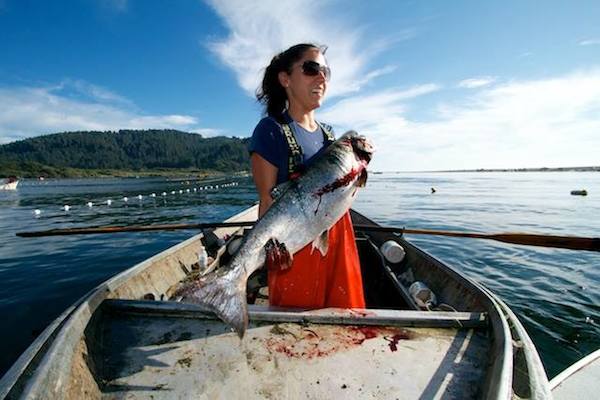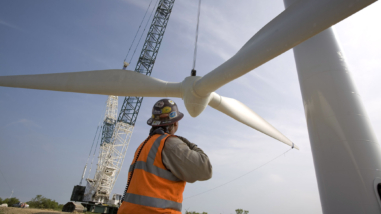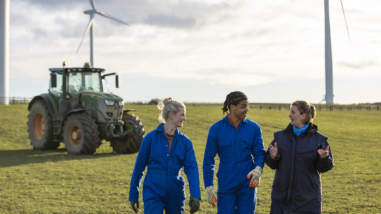People of the North American West depend on healthy rivers, national parks, forests, monuments, and other public and working lands to sustain their families and their communities. These majestic landscapes provide refuge and inspiration, and fulfill economic, cultural, and spiritual needs.
And yet, we are losing the equivalent of a football field of natural land in the Western United States every two-and-a-half minutes. Family ranches are being chopped up and sold off. Oil and gas development is moving dangerously close to sacred landscapes, schools, and critical wildlife habitat. Water is over-allocated and increasingly scarce due to climate change. Wildlife corridors are divided by highways, dysfunctional and aged dams, and development. Funding and incentives for sustaining working lands and protecting public lands and habitat are dwindling. Moreover, increasingly polarized national politics threaten to undermine our collective ability to identify common ground and advance common-sense conservation policies.
Given the range of these threats, how can we best support community efforts to protect the ecological integrity and biodiversity of the North American West? This is the central question of a process we undertake every five years at the Hewlett Foundation to update or “refresh” our approach to grantmaking. We aim to account for scientific or technological innovations, and understand recent changes in the social, demographic, economic, and political landscapes that might affect our conservation and collaboration opportunities.
For this strategy refresh, we drew on a retrospective evaluation of the Western Conservation grantmaking program; a grantee survey on equity, inclusion, and diversity in conservation; a report about best practices for communicating and collaborating with rural western communities; and evaluations of Hewlett’s Canadian Boreal Forest Initiative (2013-2018) and the California Drought Initiative (2015-2018), all of which we aim to share publicly in the coming weeks. We are very grateful to the 200-plus grantees, academics, philanthropists, policymakers, partners, consultants, and other stewards of the West who offered creative ideas and input, analysis, and thoughtful critique over the past year via convenings, conference calls, and coffee klatches.
We learned that the journey matters as much as the destination, or to put it another way, we need to slow down and refocus on how we do conservation. To this end, our refreshed strategy includes a few strategic imperatives:
- Listen more to grantees, partners, and communities to obtain new perspectives, identify innovative solutions, and capture and share best practices. We’re focused on getting and using feedback from many perspectives, especially from the people that our charitable dollars are intended to serve.
- Prioritize equity, inclusivity, and diversity for ourselves and for our grantees. This is not simply a moral exercise. Rather, it is critical to finding and advancing conservation outcomes that are enduring because they are politically, culturally, and economically-relevant to the diverse communities of the North American West.
- Take a systemic approach to policy change. Academics tell us that effective organizations and coalitions can deliver meaningful policy outcomes if they know how to pull any multitude of change levers (including persuasive communications and civil litigation) at the local, state, and national levels, and have the necessary relationships and skills to connect authentic community voices with key policymakers and influencers. This sort of interconnectedness or connective tissue between communities and organizations is critical to defend and advance multi-benefit policies from conception through to implementation.
These imperatives require us to renew the focus in our grantmaking on community-driven, collaborative conservation solutions. This entails a shift from securing federal public land policy and protections toward supporting grantees advancing economically and ecologically relevant solutions at the state and local levels. Place-based, collaborative conservation is increasingly seen as the future in ecosystem-based or large landscape management, as it balances natural and social values at large scale. This kind of slow-but-critical labor helps ensure that policy wins deliver long-term benefits for both nature and communities.
As Wyoming State Representative Albert Sommers said in a recent Christian Science Monitor article: “You and I have a conversation, eventually you and I develop a relationship, and eventually you develop trust and out of that you can find a solution. It’s not simple. It’s not fast. Conservation, real, serious conservation; it’s hard.”
We aim to support grantees in the refreshed strategy doing this “serious conservation” work toward advancing state and local solutions across the American West, especially those ideas that break down silos between issues and build new alliances. We will support grantees collaborating with scientists, ranchers and landowners, sportsmen and women, fish and game commissioners, and state and tribal government agencies (and, where feasible, federal agencies) to identify and protect priority land and river corridors, and advocate for new public funding to incentivize conservation. We also hope to continue to support First Nations and other communities advancing just and sustainable conservation goals, including new Indigenous Protected and Conserved Areas in Canada. And importantly, we aim to build a broader, more inclusive movement for conservation.
We stubbornly believe that conservation of our rivers, wildlife habitat, parks and public lands can and should be apolitical. And why not? Local economies, drinking water supplies, outdoor recreation, Native cultures, and the Western way of life depend on it. If conservation becomes an asset – and not a liability in the North American West – we all win. Wildlife wins, and, most importantly, communities win. And if communities win, that means conservation solutions will most certainly endure the winds of change.




